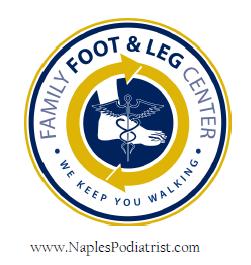"I have a bunion on the outside of my foot"
This is more commonly called a bunionette, which is a small bunion occurring on the outside of the foot. They are also called tailor’s bunions, which likely stemmed from a shoemaker's peril in constructing fitting shoes for patients with extremely wide distal feet. Regular bunions affect the big toe, while a bunionette is a bunion on the pinky toes. A bunionette is a visible bump along the outside of the foot at the base of the little toe.During the development of a bunionette, the little toe is being pushed over towards the other toes. Over time, this causes the joint at the base of the little toe to protrude. Without treatment, bunions and bunionettes may progress to a completely dislocated toe with excessive widening of the angle between the fourth and fifth metatarsal bones. A painful callous, "Lister's" corn, or other abnormality may form at the site of the bunionette.Tailor’s bunions often happen to people who have feet which pronate excessively during their gait. These smaller bunions can also be a result of footwear that doesn’t fit properly. A more uncommon cause may be a genetic predisposition towards bunions which is passed from parents to offspring in a seemingly predictable pattern. A doctor will rule out other causes for the pain and swelling, such as arthritis or joint infection.Another cause, as the pseudonym “tailor’s bunion” implies, could be related to occupational or habitual pressure on the outside of the foot. The name comes from the fact that tailor’s were prone to these small, external bunions due to the position they kept their feet in while working, which may have caused pressure to the joint leading to bursal formation and eventual lateral capsule "wear and tear" leading to the medial pull of the toe towards the others.Though it is a possible cause, bunionettes are almost always caused by footwear. Ballet dancers are prone to bunionettes due to the tight ballet shoes.Bunionettes can be painful, especially when irritated by friction from footwear. A non-surgical treatment option for a bunionette involves buying shoes that allow more room for the toes. This may be coupled with various cushions and even arch supportive orthotics to reduce the abnormal pronation which may allow for more rapid progression of the deformity.Someone with tailor’s bunions may choose to go barefoot or wear sandals to stop this irritation. A shoe repair shop may be able to stretch shoes that are uncomfortable. In some cases, wearing footwear that doesn’t put pressure on the foot is the only treatment needed.Using nonsteroidal anti-inflammatory drugs (NSAIDS) may help relieve any pain or discomfort. Elevating the foot and applying ice to the affected area can give some relief. Any bunions occurring in children require medical attention.Using bunionette pads can help alleviate the pain. A bunionette pad cushions the affected area and stops friction from footwear. Bunionette pads are available at most drug stores. Moleskin or felt patches can be used to stop the bunionette from rubbing against the shoes.Tailor’s bunion surgery is an option if the bunionette is problematic. Bunion foot surgery should only be considered if the non-surgical bunion treatments fail to provide relief. The surgeon will order tailor’s bunion x ray to check the degree of damage to the foot. The surgeon will consider this and other factors to decide which procedure or procedures will be most effective to relieve your symptoms.
Monday, April 2, 2012
Subscribe to:
Posts (Atom)



